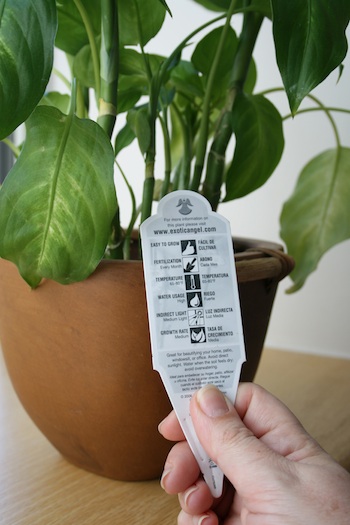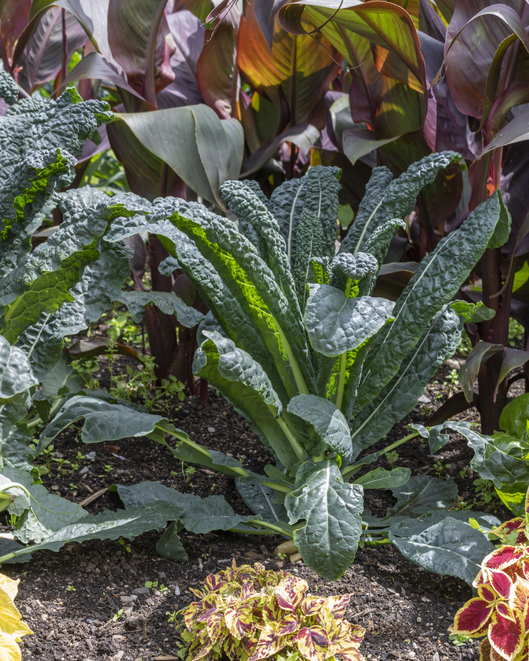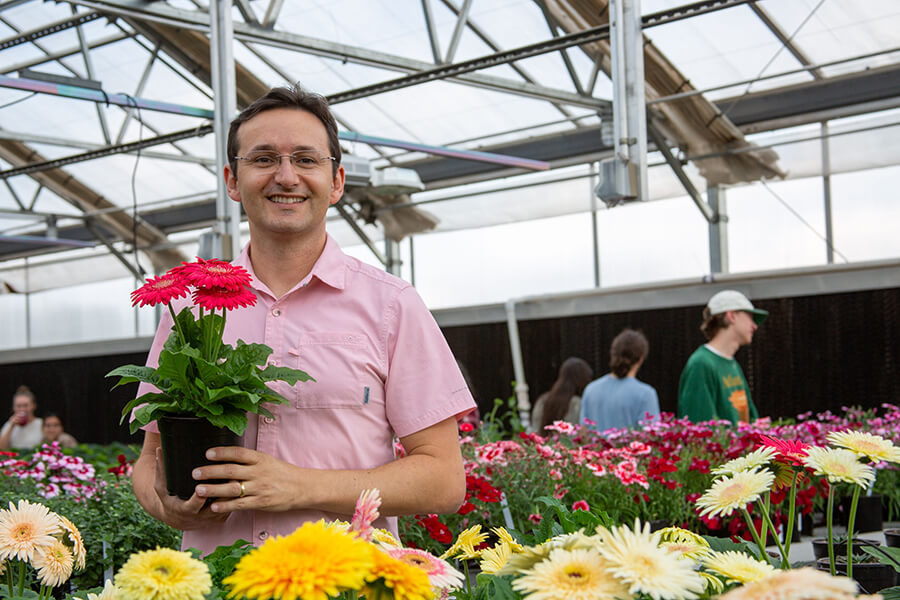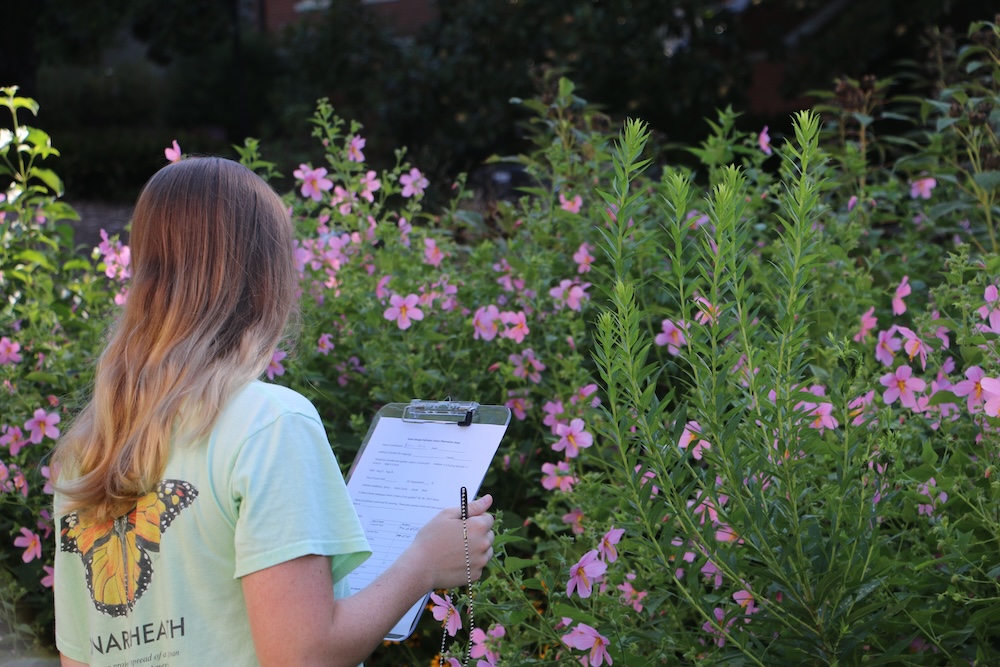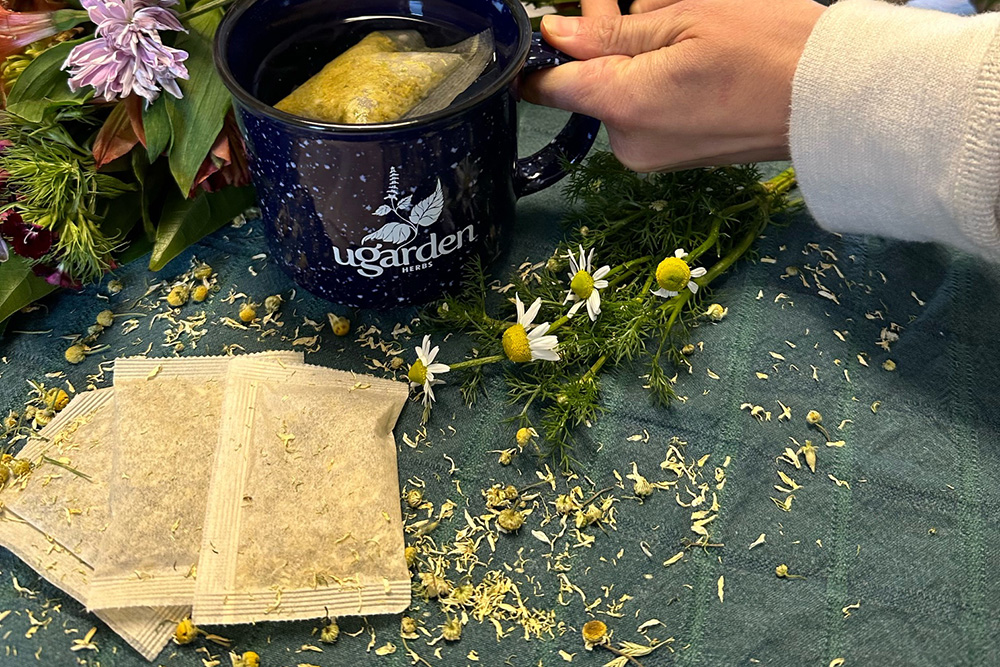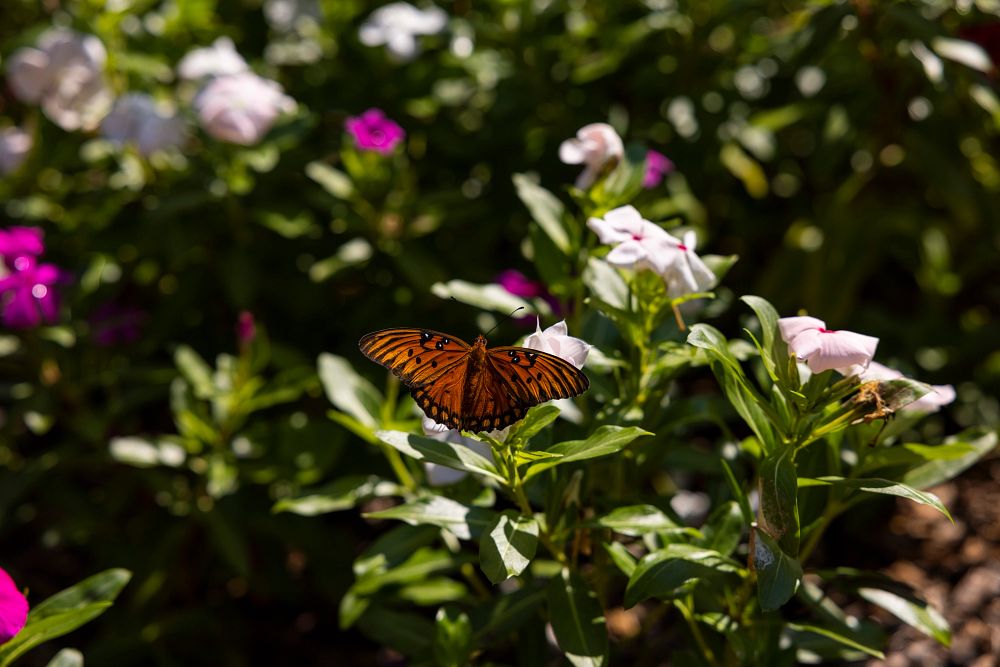Hanging baskets are an attractive and practical way to add color and beauty to outside areas, such as patios, decks and terraces. In the old days, hanging baskets contained only one type of plant. But in recent years, mixed baskets have become very popular.
These “instant gardens” appeal to beginning gardeners and longtime hobbyists alike.
Select a pot
Plastic hanging baskets are inexpensive. To create a natural look, use moss and coco fiber baskets instead. Plants in moss and coco baskets can dry out fast, so the plants may need to be watered more often.
When using a moss or coco basket, be sure add a plastic insert that has holes in it for drainage. This will allow water to stay in the container longer. Adding a plastic liner will help retain the natural outside effect of the basket while helping hold moisture inside.
When creating a hanging basket, start with a good foundation. Often called potting soil, the best potting mix doesn’t contain any soil. Regular topsoil usually doesn’t have the qualities necessary to support good plant growth in containers. And it may contain diseases and weed seeds.
A good potting or soilless mix is well drained and aerated, yet holds moisture and nutrients well. Such mixes may contain peat, bark, perlite and vermiculite in various proportions. The pH of the mix, or how acidic or alkaline it is, directly affects the plant’s ability to take up nutrients. Choose a mix in the 5.5 to 6.5 pH range.
Carefully select location
Hanging baskets should not be placed in windy sites. Wind causes the plants to dry out quickly and need frequent watering. This can stress the plants and cause them to perform poorly.
Select plants that perform in full sun to partial shade when hanging a basket of plants in a location that get 4 to 12 hours of sunlight per day. Use plants that prefer partial to full shade if the basket will get 2 to 4 hours of early or late sunlight per day. To select the proper plants for either location, read plant labels.
Above all, remember to only combine plants that have similar water, light and nutrition requirements. Fill the basket with potting mix to within a few inches of the rim. If the mix doesn’t contain nutrients, mix in some slow-release fertilizer. Follow label rates for the size of the container. If a water-retaining agent is added, mix it with the plant media before adding the plants.
Water, fertilize and deadhead
To keep hanging plants growing and flowering, supply plenty of water and nutrition all season. When plants are small, their water and nutrition needs are lower. As the weather warms and plants grow, their water and nutrition requirements increase.
Container-grown plants should be fertilized about once every other week. When using a liquid plant food, make sure the potting mix is moist. If the potting mix is dry, the fertilizer salts could damage the plant roots.
On a regular basis, deadhead the plants (remove spent flowers) to encourage new flowers to develop. Pruning and trimming plants will also stimulate new growth. Scout thoroughly and often for pests and diseases. Look closely at the flowers and foliage for pests and damaged, deformed or discolored leaves or flowers. Part the foliage to examine the center of the plants more closely.
A stressed plant is more prone to diseases and pests. Properly water or fertilize plants to reduce stress.
Planting healthy, high-quality plants is a good start, but to keep them robust and attractive, you must provide the best growing conditions.

